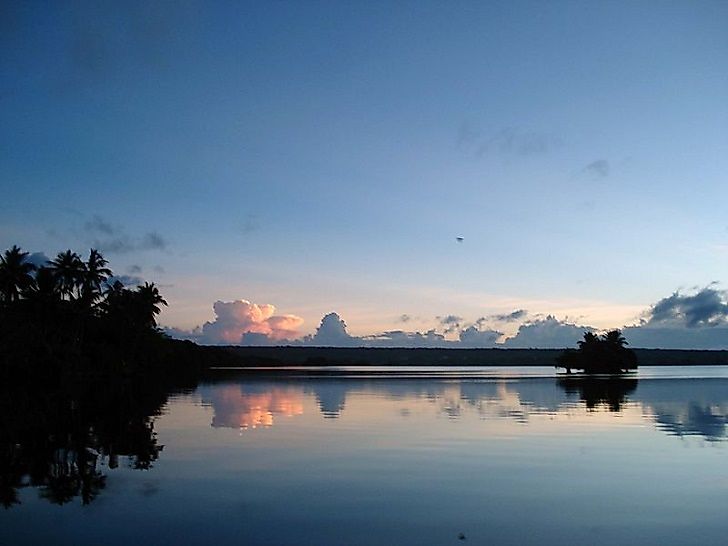Rennell Island And Lake Tegano, Solomon Islands

Rennell Island is the largest raised coral atoll in the world. Rennell is a testament to evolutionary processes and is home to Lake Tegano. The atoll covers an area of 87,500 hectares, and it is 15 kilometers wide and 86 kilometers long. It is a world heritage property occupying a third of the Island. Lake Tegano alone covers 15,000 hectares, making it the largest lake in the insular Pacific. The lake is home different endemic species including sea snake. The surrounding terrain is covered with dense forest that has remained in its natural state and has a rich biodiversity. There are four species and nine subspecies of land and water birds respectively. Rennell Island has gained recognition across the world for its unique ecology and rich biodiversity. The area is increasingly gaining attention as a center for tourism activity in the Pacific.
5. Description -
Tucked deep in the Pacific Ocean is the Rennell Island, which is part of the Solomon Islands archipelago. The Island and the Bellona Island, both of which are inhabited, make up the Rennell and Bellona Province of the Solomon Islands. The geology of the island is made of raised coral limestone and low-grade phosphate rock in limited areas. The island’s eastern part was listed as a UNESCO World Heritage in 1998, including Lake Tegano. Covering 17.6% of the island is Lake Tegano, which is the largest freshwater and inland lake in the South Pacific. The lake has numerous limestone islands and supports a high level of endemism.
4. Historical Role -
The first inhabitants of Rennell Island identified with the Lapita Culture. Later on, Polynesians settled in the region. Lake Tegano first became a naval base for the Japanese in the Pacific Campaign of World War II. The Americans established a base after the Japanese in 1943. The American occupation led to a battle between navies from the two countries, which was dubbed ‘Battle of Rennell Island.' The battle was fought on Rennell Island and resulted in a victory for the Imperial Japanese Navy. The war marks history as the last major naval battle between Japan and the US.
3. Evolutionary Significance -
The island exhibits continuing biological and ecological processes, and it is important as a natural laboratory for scientific research. The island is an important region to assess the evolution and migration of different species in the western Pacific. The island is home to abundant endemic species, especially in regards to avian fauna. These species present scientists with the opportunity to study speciation processes.
2. Habitats and Biodiversity -
Notably, Rennell Island is home to the endemic Rennell Starling, Rennell Shrikebill, Rennell Fantail, and the Bare-eyed white-eye bird species. The Solomon White Ibis is endemic to the island and its smaller island neighbor of Bellona. Other endemic species that inhabit the island are bats and seven land snails. The island also provides a habitat for an estimated 730 species of insects, most of which are endemic. Rennell Island is characterized by dense forests which provide a natural habitat for the island’s flora and fauna. Lake Tegano is home to an endemic sea snake. The Lake is also home to over 300 species of algae and diatoms, some of which exhibit a level of endemism.
1. Environmental Threats and Conservation Efforts -
The natural landscape of Rennell Island is largely intact. Lake Tegano is, however, increasingly threatened by rising salinity and water levels as a result of climate change. This situation is affecting plant growth in the lower regions. The local community in the island is actively involved in conservation efforts. The region is under the customary ownership, and its management is by the Ministry of Environment. The local community, international non-governmental organizations, and the government alike are all actively involved in the region’s conservation.











